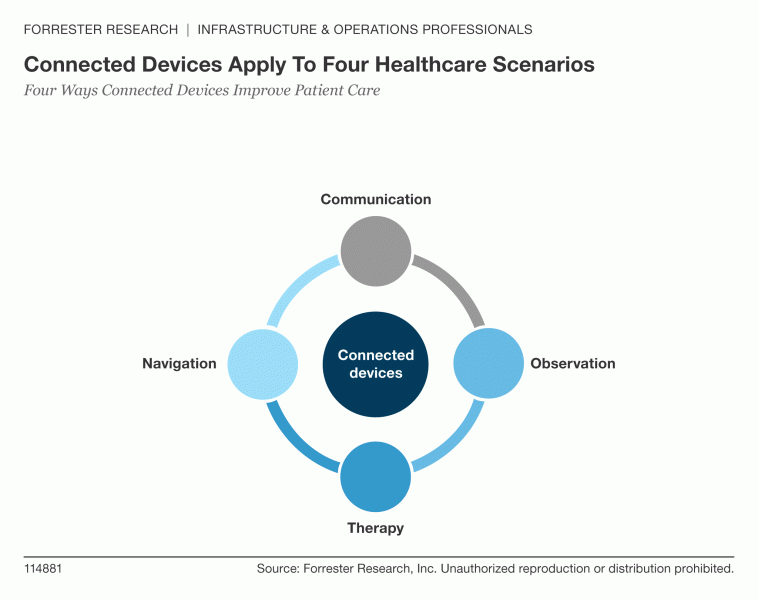Smart, Connected Devices Reshape Customer Experiences in Healthcare and Insurance
We're living in a time when smart, connected devices — tablets, smartphones, wearable devices, Internet of Things (IoT) devices, and the like — are being woven into the Business Technology (BT) Agenda of most companies. Nowhere is this trend more intimately applied to the customer experience than in healthcare, where devices near our bodies, on our bodies, or even inside our bodies are changing the way doctors, insurers, and other healthcare players think about patient care.
In a a major new report, Four Ways Connected Devices Improve Patient Care, we've researched how mobile, cloud, and connected devices come together to reshape the patient care experience. Technology innovations on the device and services side are creating new treatment options. And systemic changes to the healthcare system are creating both challenges and opportunities, which these emerging technologies can help address. For instance:
- Busy doctors spend too much time on electronic health record (EHR) data entry. And when they use a traditional PC in the room with a patient, it's not always a great experience; one doctor told us he felt his "back was to the patient" too often. The solution? Moving to a Surface Pro 3 tablet, armed with better software, which allows the clinician to face the patient directly while still saving time — and gaining accuracy — on EHR data entry.
- In the US, the Affordable Care Act (ACA, colloquially Obamacare) is changing incentives. The ACA encodes policies designed to decrease costs while improving patients' health outcomes; for example, hospitals pay penalties if they re-admit the same patient within thirty days of a hospital stay. These policy changes have driven increased interest in smart, connected devices like wearables, which can help healthcare providers ensure that patients remain healthy without readmitting them.
Given these, and other, tectonic shifts in the healthcare environment, I&O leaders in healthcare and insurance have an opportunity to contribute to solving these problems. Specifically, I&O leaders can support the creation of new patient care strategies by complementing them with innovative connected devices for use by patients, clinicians, and informal caregivers. I&O leaders can expand the technology baseline, showing what's possible. These connected devices help in four healthcare scenarios:

For example, connected devices can provide technology:
- For observation: Monitoring elderly patients. CarePredict combines wearables with beacons to help senior citizens living on their own. The senior’s activities are tracked throughout her home, establishing a typical daily “Tempo” score. When the senior deviates from the norm, the system alerts a caregiver to check in.
I invite you to please read and download the report, Four Ways Connected Devices Improve Patient Care, for analysis, case studies, and a framework for thinking about the brave new world of smart, connected devices in healthcare. My thanks to my colleague Skip Snow, Forrester's expert on healthcare, for his ideas, support, and feedback on this report.
J. P. Gownder is a vice president and principal analyst serving Infrastructure & Operations Professionals. Follow him on Twitter at @jgownder
